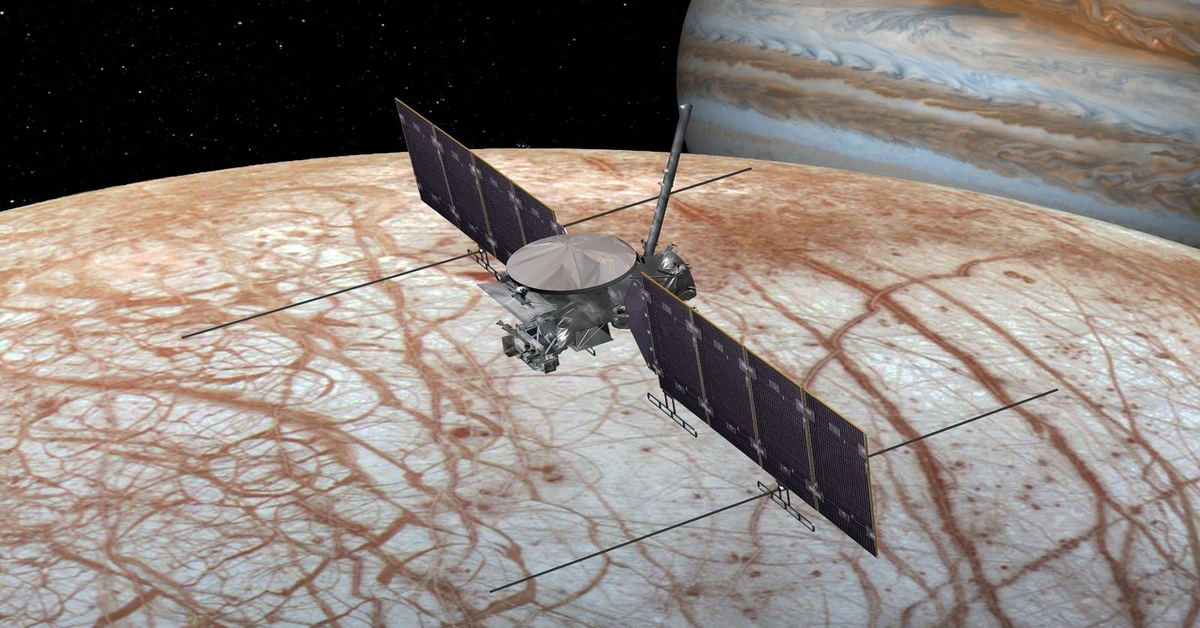The fifth planet from the sun and the most massive in our Solar System, Jupiter is one of the major focuses of NASA’s space explorations. “Massive” might be an understatement here – Jupiter is twice as big as all the other planets combined!
Lately, its moon, Europa, has been gaining quite a lot of traction too. But why?
Engulfed by an icy shell, the planet has a vast ocean, one which researchers speculate may host some form of life.
And because of that NASA is launching the Europa Clipper mission in 2024 to gather data on the Ocean Moon’s atmosphere, surface and interior using a Multiple Flyby Orbiter.
What’s going on underneath the surface?
Scientists have been studying the moons of Jupiter since the 1970s, with multiple flybys using the Pioneer 10 and 11, and Voyager 1 and 2 space probes.
Looking at data on Europa’s magnetic field and spotting plume activity on its surface, researchers are all but certain that an ocean lurks underneath the moon’s icy crust.
According to the latest research and modelling supported by NASA, it’s also possible that volcanic activity occurred on the seafloor in the recent past – and may still be happening. If these volcanoes are still present, they could be what are powering the hydrothermal systems like those on Earth’s ocean floor.
These hydrothermal vents give rise to tidal heating, which powers a system that cycles water and nutrients between the moon’s rocky interior, ice shell and ocean. This could in theory create an environment with the perfect concoction of chemicals and energy to support life forms on Europa. Life, as we know it, is also speculated to have emerged around hydrothermal vents on Earth’s ocean floor billions of years ago!
With abundant water, energy and the correct chemistry, this could be the perfect storm for the emergence of life on Europa – and that’s why scientists are so keen to investigate it. Check out NASA engineers working hard to ensure that the sophisticated suite of nine scientific instruments carried by the Europa Clipper is in tip-top conditions before its launch.
A planet of major intrigue.
Harbouring a total of 79 moons, it’s no wonder scientists are so intrigued by Jupiter.
And with that in mind, Europa will have to share the search spotlight with many other sibling moons. Just recently the Hubble Telescope detected water vapour ejecting from the icy surface of Ganymede, the largest moon in our Solar System – even larger than some planets like Mercury!
Such a vital discovery prompted Ganymede to get its own mission too, dubbed JUICE, which will be launched next year to hunt for signs of life on the moon.
Beyond narrowing the search for life on other planets, understanding Europa’s habitability will also be another step forward in deciphering the origins of life on Earth and point the way towards life on exoplanets.
Perhaps, Ocean Worlds might be as conducive for life as rocky planets!






























